September 14 marks Pope Leo XIV’s first birthday since being elected head of the Catholic Church. Rebekah Coffman, curator of religion and community history at CHM, reflects on his ties to Chicago, what it means to be an “American” Catholic, and how his views on immigrants and refugees echo those of previous Catholic leaders.
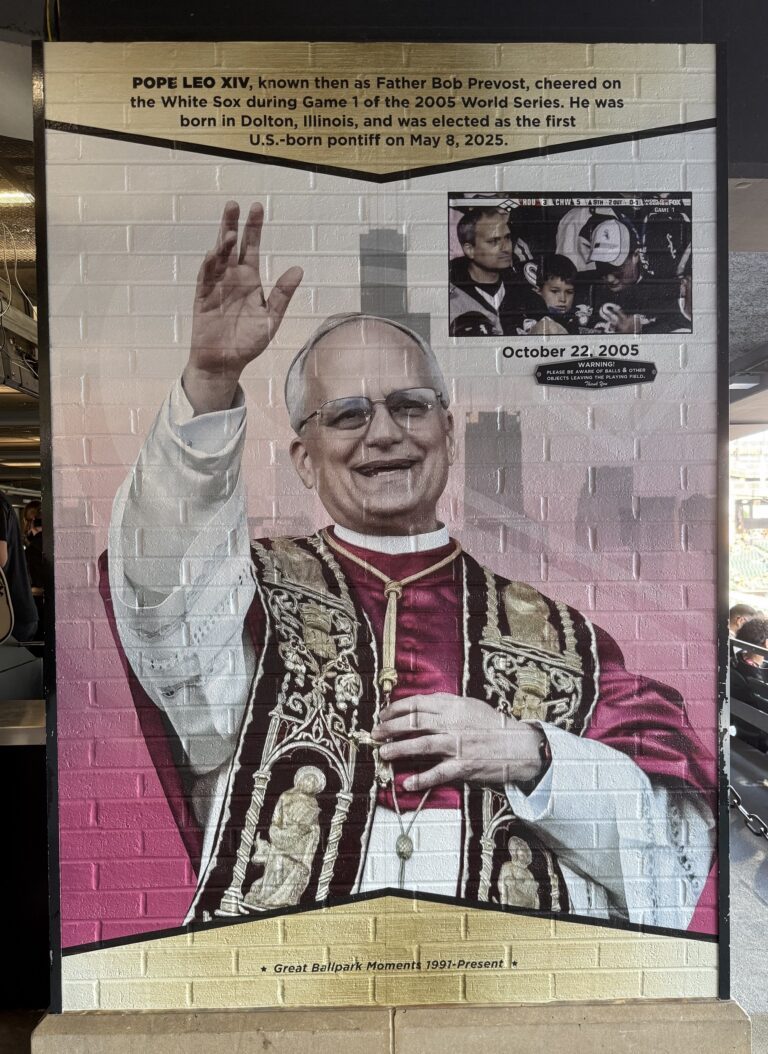
Mural commemorating Pope Leo XIV at Rate Field, Chicago, 2025. Photograph by Rebekah Coffman
On May 8, 2025, an unprecedented historic event took place: the selection of Robert Prevost, now Pope Leo XIV, to be the first Pope of the Catholic Church from North America and the second to have South American citizenship. Not only was the new pope born in the United States, but in our one and only Chicago, spending his formative years and early career in and around the city. Chicago, and the internet, responded to this news with a righteous combination of surprise, spiritual reverence, hometown pride, and—of course—a ridiculous amount of memes and merch.
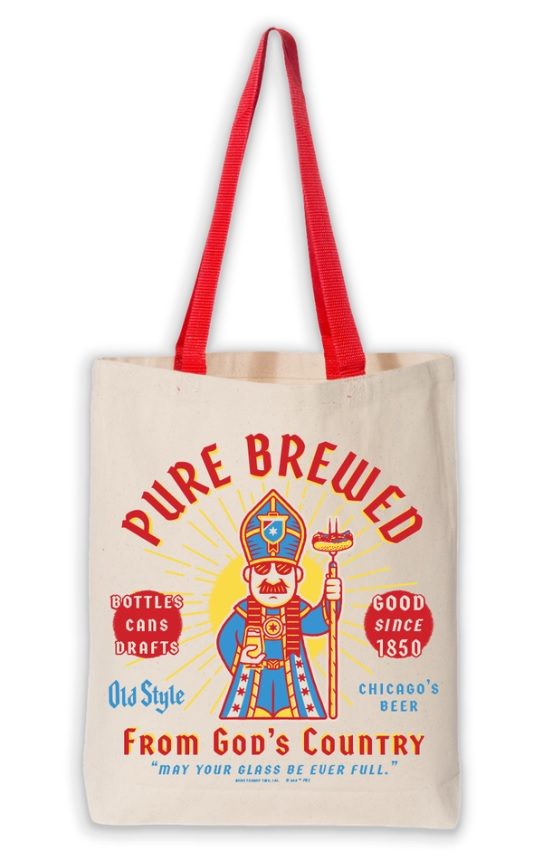
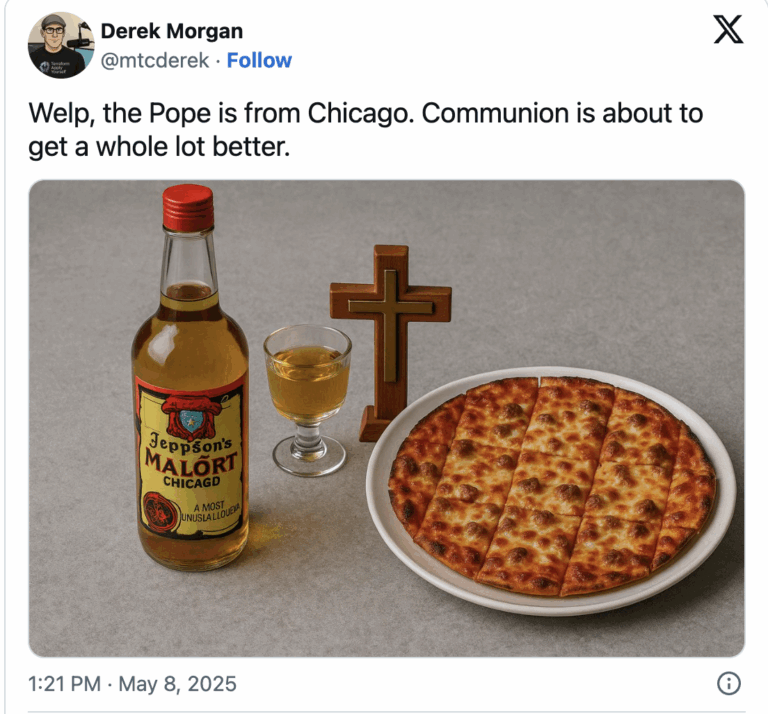
Pure Brewed Pope Bag. Image: Transit Tees. Post on X (formerly Twitter) by @mtcderek
The uproar and visual claiming of Pope Leo XIV’s Chicago roots have brought forward a number of important and timely questions: will a pope from the United States bring new relevance to Catholicism amidst declining Catholic Church attendance? Will younger generations find him approachable and relatable? What perspectives will he bring to leadership on key social issues such as climate change, LGBTQIA+ rights, racial inequity, and gender equality? Is he a Cubs or White Sox fan?
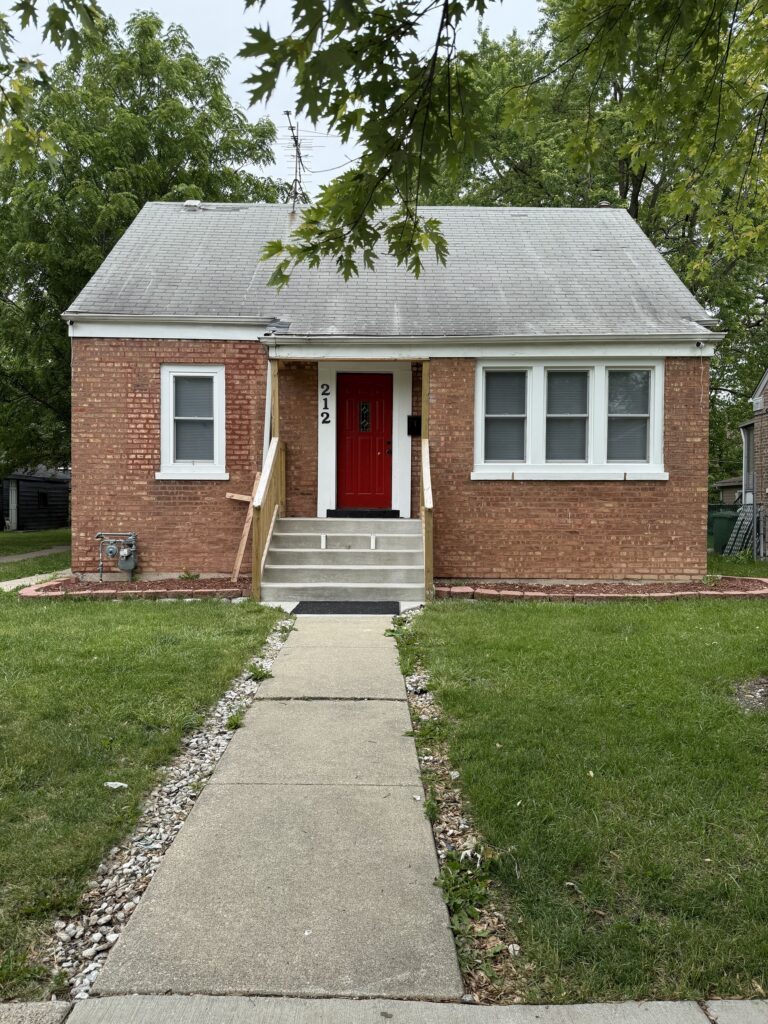
Pope Leo XIV’s childhood home, 212 E. 141st Pl. Dolton, Illinois, 2025. Photographs by Rebekah Coffman
Before delving further into theological beliefs and baseball allegiances, we’ll first give a brief overview of Pope Leo XIV’s many connections and roots in Chicago. Robert Prevost was born on September 14, 1955, in Chicago’s Near South Side at Mercy Hospital. He was raised in the near south suburb of Dolton, while his home parish church, St. Mary of Assumption, was just over the border in Chicago’s Riverdale community area, with both communities home to major industrial activities and the ethnically and racially diverse workers that followed.

St. Mary of Assumption Catholic Church in the Riverdale community area, 310 E. 137th St., Chicago, 2025.
Prevost is an alumnus of Catholic Theological Union in Hyde Park, attending just after joining the Augustinian Order in 1977 and before embarking on a decades-long career in international ministry to Peru, where he served in various parish ministry positions from 1985 to 1998. Upon returning to Chicago, he served in a regional leadership role from 1999 until becoming prior general, meaning the head of the entire Augustinian Order, from 2011 to 2013. He returned to Peru in 2014 to serve first as an administrator, then later as bishop in the Diocese of Chiclayo in northern Peru, and finally as vice president of the Peruvian Bishop’s Conference. He became a Peruvian citizen in 2015. In 2023, Prevost was called to service at the Vatican by Pope Francis until being chosen as his successor earlier this year.
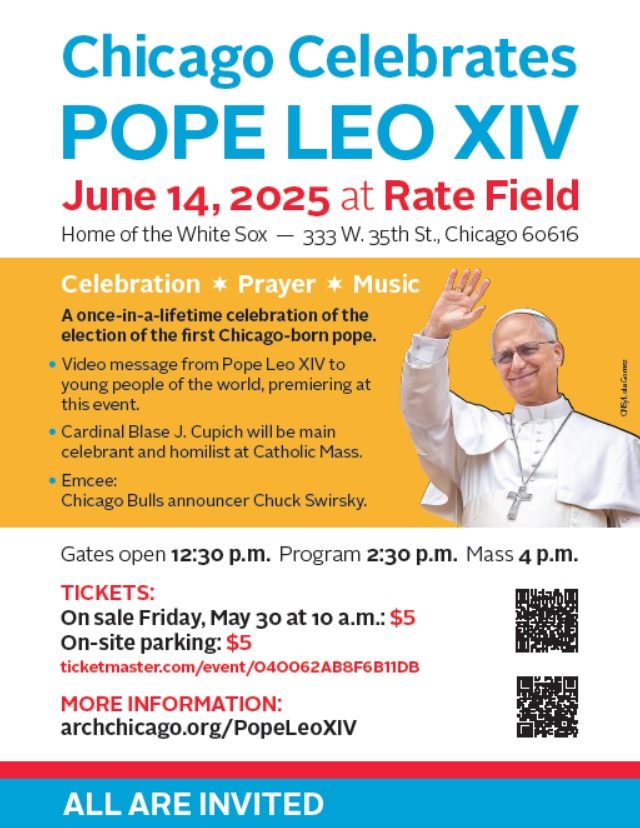
Event flyer for Chicago Celebrates Pope Leo XIV, 2025.
Pope Leo XIV’s full perspectives on many of the global issues mentioned above are still being revealed. However, fortunately for Chicago and the world, the issue of baseball allegiance was quickly clarified as his South Side roots confirmed him as a lifelong White Sox devotee, now enshrined by the above mural at Rate Field marking his seat for the infamous 2005 World Series White Sox win. This was further solidified on June 14, 2025, when the Archdiocese of Chicago held a widely attended celebration mass in the pope’s honor.
The mass included many speakers who attested to his humble roots as a Chicagoan, describing him as an everyday man while assuring crowds that his humility did not outpace his thoughtful, assertive, and skilled leadership. A video message directly from Pope Leo XIV shared his personal stances on the importance of global relationships and international community building. The Archbishop of Chicago Cardinal Blase Cupich spoke after, and his message tied this theme specifically to the importance of welcoming immigrants and refugees in Chicago, especially for those who are undocumented, who are “not here by invasion but by invitation.”
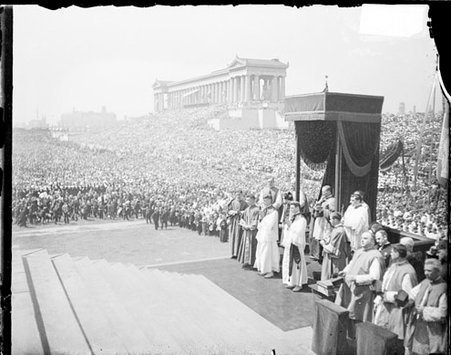
Clergy standing in Soldier Field surrounded by a crowd at the International Eucharistic Congress, 1926. DN-0081750, Chicago Sun-Times/Chicago Daily News collection, CHM
Gathering in stadiums or other big, public secular spaces to appeal to mass audiences has been a common historical playbook for religious leaders. A striking past example in Chicago includes the XXVIII International Eucharistic Congress (IEC) held at Soldier Field in June 1926. The IEC came at another crucial period for considering how newly arrived immigrants and migrants would, or would not, be embraced and welcomed into the Chicago Catholic fold. This was especially true for Chicago’s growing Mexican and Spanish-speaking Catholic communities in the 1910s and 1920s.

Cardinal George Mundelein (center right) with Cardinal John Bonzano (center left, holding hat), special delegate from the Vatican to the International Eucharistic Congress, 1926. DN-0081691, Chicago Sun-Times/Chicago Daily News collection, CHM
The archbishop at the time of the IEC, Cardinal George Mundelein, was a strong advocate for unified, “Americanized” Catholicism. Yet, he also saw the value that national and ethnic parish churches had played for earlier generations of European immigrant communities. As historian Deborah E. Kanter writes in her book Chicago Católico: Making Catholic Parishes Mexican, Mexican Catholics created a “conundrum,” as they didn’t fit the existing national parish church molds, nor would English-speaking parishes serve their community needs. Mundelein, sensitive to this as well as to declining Catholic church attendance in areas of neighborhood succession, gave a new platform to Mexican Catholic presence through events held as part of the IEC at St. Francis of Assisi Catholic Church, a formerly German-majority parish on the Near West Side that, through advocacy by the Claretians, became the second Mexican parish church in the city.
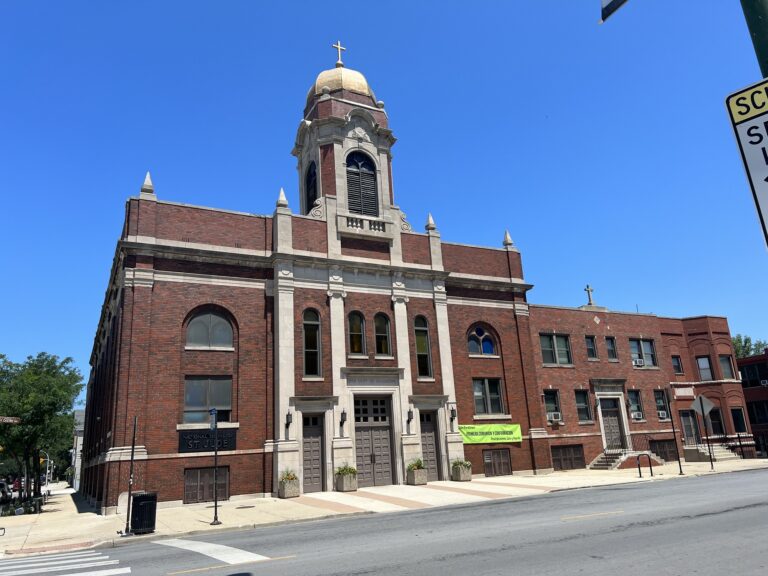
Our Lady of Guadalupe Church exterior, 3200 E. 91st St., Chicago, 2022. Photograph by Rebekah Coffman
Just two years before, in 1924, Chicago’s first Mexican Catholic church, Our Lady of Guadalupe, was formed to serve growing communities who lived and worked near South Chicago’s steel mill industries. In the following decades, the city’s growing Latino/a/e communities would fill increasingly more Catholic pews as Spanish-speaking services were provided. This was precipitated in part by the work of the Cardinal’s Committee for the Spanish Speaking who became particularly interested in the distinct needs of Puerto Rican Catholics and racial concerns for their visible proximity to Blackness. We discuss more of the history and legacies of Our Lady of Guadalupe, St. Francis, and other sacred spaces for diverse Latino/a/e communities in our forthcoming exhibition Aquí en Chicago.
Our Lady of Guadalupe Church interior, 3200 E. 91st St., Chicago, 2022. Photograph by Rebekah Coffman
The questions the IEC and Cardinal Mundelein were discussing—this idea of what it means to be an “American” Catholic and how immigrant Latino/a/e communities did or did not fit this definition—holds an echoing resonance with the ideas and sentiments shared at the Rate Field gathering in June 2025 and with themes of welcoming strangers as a Sanctuary City. Another similar historical parallel is the question of how “Americanness” may or may not extend beyond the borders of the US and could expand to include Mexico, Central and South America, as their names linguistically imply. To this end, the Pope’s experiences in the US and South America embrace this intercontinental definition of American Catholicism.
Even further, reports on his personal identity and genealogy have been examined on a near-granular level for how he physically embodies what it means to be, as Henry Louis Gates Jr. described, the “first pan-American pope.” Reports going back as far as fifteen generations of family lineages have described Pope Leo XIV’s diverse Creole, Cuban, Spanish, Italian, French, and Black heritages, much of which was lesser known and suggest what some call an “unreconciled” history of racism, colonialism, slavery, and segregation that is an important part of American and Chicago Catholic histories and experiences.
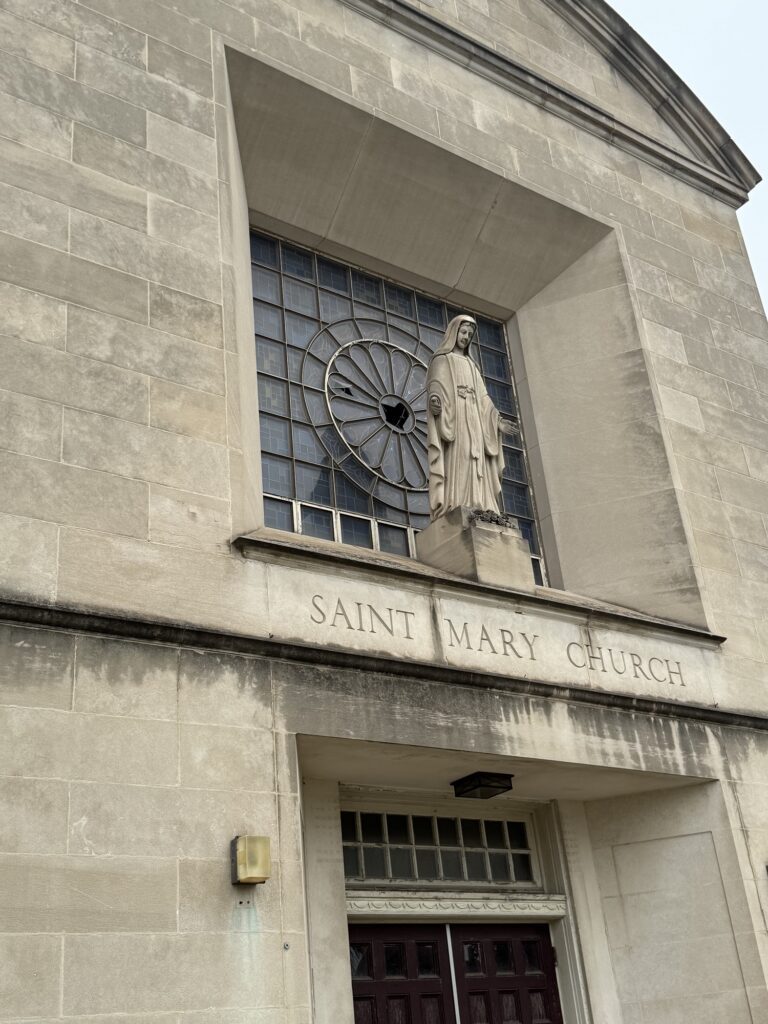
Detail of St. Mary of Assumption Catholic Church facade, 2025. Photograph by Rebekah Coffman
This question of reconciling historical racial and ethnic inequalities lingers amidst a critical time in both global and local Christianity as shifts away from mainline denominations continue to trend. Numerous historic church buildings in Chicago have closed and congregations have merged as declining attendance and limited financial resources become stretched too thin. This is reported to disproportionately affect communities of color. Pope Leo XIV’s childhood parish of St. Mary of Assumption is a prime example, having closed in 2011 due to diminishing attendance and subsequent physical decline, while today, more than 90% of its surrounding residents identify as Black or African American. Many across the city are thinking of ways to preserve St. Mary’s as a landmark and tourist stop in honor of its connection to the pope while hopefully maintaining community use, but plans are not yet publicly solidified.
As of 2024, the Archdiocese of Chicago serves ~1.9 million Catholics in 216 parishes with 1,177 weekly services, of which nearly a quarter are conducted in Spanish. In fact, 42% of Catholics in Chicago are Spanish-language speakers. And, of the 216 parish churches, at least 100 serve Latino communities, and 30 are Black Catholic parishes. Historically, it is through the efforts of these communities that parish churches that were once on the brink of closure or demolition were revived and made relevant for new generations of Catholic congregants.
While over half of Latino/a/es in the US still identify as Catholic in some way, that number is shrinking as many shift to Protestantism, non-Christian traditions such as Islam, and increasing lack of affiliation with any religious tradition. Chicago has set the precedent and been an active agent in shifting religious tides of the past. Perhaps it is these Chicago roots that will serve Pope Leo XVI as he leads the world in what will be Catholicism’s future.
For Further Reading
- “We owe so much to so few.”, a blog post on Our Lady of Guadalupe Church
- “‘Here Comes Everybody’: The 28th International Eucharistic Congress,” Chicago History (Spring 2009)
- “Black Catholic Revolution,” Chicago History (Summer 2018)